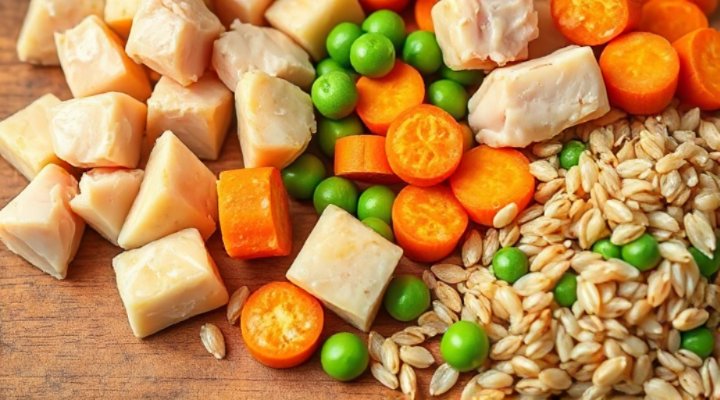When it comes to raising a happy, healthy puppy, choosing the best puppy food is one of the most important decisions you’ll make as a pet parent. Just like human babies, puppies have specific nutritional needs that are crucial for their development. In this guide, we’ll explore everything you need to know about selecting the perfect food for your furry bundle of joy.

Understanding Your Puppy’s Nutritional Needs
Puppies grow at an astonishing rate, which means they require more calories and specific nutrients than adult dogs. According to the American Veterinary Medical Association, puppies need about twice as many calories per pound of body weight as adult dogs of the same breed.
The best puppy food should contain:
- High-quality animal protein (minimum 22% for growth)
- Healthy fats (minimum 8%)
- Essential vitamins and minerals
- DHA for brain development
- Proper calcium-phosphorus ratio for bone health

Types of Puppy Food: Which is Best?
When browsing the pet food aisle, you’ll find several types of puppy food. Let’s break down the options:
1. Dry Kibble
Dry food is convenient and helps keep puppy teeth clean. Many premium brands like Acana and Purina Pro Plan offer excellent puppy formulas.
2. Wet Food
Canned food is more palatable and hydrating, making it great for picky eaters or puppies transitioning from mother’s milk.
3. Raw or Fresh Food
Some owners prefer raw diets or fresh food delivery services. While these can be nutritious, they require careful handling and balancing.

Reading Puppy Food Labels Like a Pro
Understanding pet food labels is crucial for choosing the best puppy food. Here’s what to look for:
- Named protein source first: Look for “chicken” or “salmon” rather than vague terms like “meat.”
- AAFCO statement: Ensures the food meets nutritional standards for growth.
- Whole food ingredients: Real vegetables, fruits, and grains provide natural nutrients.
- Avoid fillers: Corn, wheat, and soy offer little nutritional value.
Remember, the ingredients are listed by weight, so the first few ingredients matter most.

Special Considerations for Different Breeds
Not all puppies have the same nutritional needs. Large breed puppies, for example, require carefully balanced calcium and phosphorus levels to prevent rapid growth that could lead to joint problems. On the other hand, small breed puppies need smaller kibble sizes and more calorie-dense food.
If you’re considering homemade puppy food, consult with your veterinarian to ensure proper nutrient balance. While homemade diets can be wonderful, they require careful planning to avoid deficiencies.

Transitioning to New Food
When switching to a new puppy food, do it gradually over 7-10 days to avoid digestive upset. Start with 25% new food mixed with 75% old food, gradually increasing the ratio each day.
Monitor your puppy’s reaction to the new food:
- Energy levels
- Coat condition
- Stool quality
- Appetite
If you notice any issues, consult your veterinarian. They can help you determine if it’s an adjustment period or if the food isn’t suitable for your puppy.
Final Thoughts on Choosing the Best Puppy Food
Selecting the right food for your puppy sets the foundation for a lifetime of health. While premium foods might cost more upfront, they often lead to better health outcomes and potentially lower vet bills in the long run.
For more information on pet nutrition, check out resources from the FDA’s pet food guidelines. And remember, the best puppy food is the one that keeps your particular pup happy, healthy, and thriving!
Related Keywords: puppy nutrition, healthy puppy diet, best dog food for puppies, puppy feeding guide, premium puppy food
